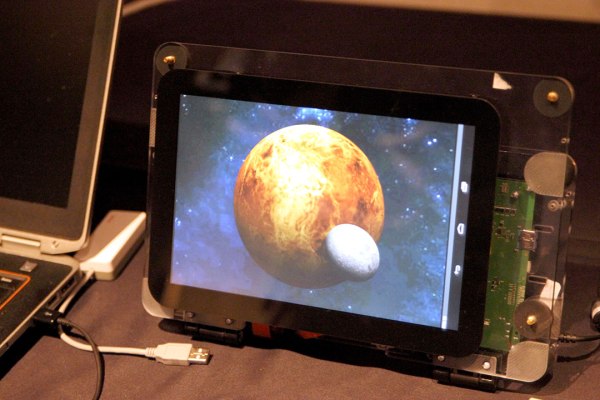Flash back a month or so to CES — NVIDIA CEO Jen-Hsun Huang officially pulled back the curtain on the company’s new Tegra 4 chipset, and called it the “world’s fastest mobile processor.” It was a hell of a claim to make, but the company did little to justify it at the time aside from pointing to its array of Cortex A15 CPU cores and its “72 GPU cores.”
Fortunately, NVIDIA is much chattier here at MWC, and was eager to show off some rather impressive synthetic benchmarks for its latest and greatest mobile chipset.
Well, maybe “eager” isn’t exactly the right word — NVIDIA really hates playing the mobile benchmark game. I don’t blame them. In many ways the sorts of numbers that these tests spit out just don’t accurately reflect the experience that users will actually have. During our early testing for instance, the Nexus 4 consistently put up some strangely anemic Quadrant scores — which its cousin the Optimus G handily blew past — despite working like a dream.
All that said, benchmarks are largely are for the most part inescapable, and the Tegra 4 SoC does a rather nice job on them anyway. Quadrant is one of our go-to mobile benchmarking tools, and the Tegra 4 did not disappoint — it scored in the mid-16,000s, topping out at 16,591. To put that in a little perspective, Samsung/Google’s Nexus 10 (which itself is powered by a relatively new dual-core 1.7 GHz Samsung Exynos chipset) usually scores in the mid-to-high 4,000s. Asus’ Transformer Pad Infinity TF700 (powered by a 1.6GHz quad-core NVIDIA Tegra 3) fared about the same, if not a hair higher.
The results were much the same when we looked at AnTuTu scores — while tablets like the Nexus 10 and Asus’ TF700 will yield scores in the mid-8000s to low-9000s, the Tegra 4 demo tablet consistently hit scores above 36,000.
Curious about how the Tegra 4 compares in your preferred benchmarking suite? You can see the full gallery of Tegra 4 benchmark results below:
One of NVIDIA’s most prominent competitors these days is Qualcomm, and NVIDIA Product Marketing director Matt Wuebbling was eager to chat about the performance differential when I let slip the Q word.
When asked about how much NVIDIA knows about Qualcomm’s updated Snapdragon chipsets, he replied simply enough: “we know a lot.” By his count, the Tegra 4 is about two to three times faster than Qualcomm’s Snapdragon 600 (used in devices like the new HTC One). He went on to say that the top-tier Snapdragon 800 is about 25 to 35 percent faster than the 600, with the implication that the Tegra 4 still comes out on top.
Though his response has based on Qualcomm’s published Snapdragon claims, I’d still advise you to take that comparison with a grain of salt. That’s nothing against Wuebbling, but these sorts of simple comparisons don’t always paint the most accurate picture. I couldn’t reach Qualcomm for response at time of writing, but I’ll update if/when they respond to these claims.
You would think that this sort of horsepower would suck a battery dry in jiffy, but that doesn’t appear to the be the case. Another Tegra 4 demo had a video running at full resolution on a small 1080p display, an exercise that never drew more 1 watt of electricity at the most. Power consumption typically fell within the 900-950 milliwatt range — devices like the Droid DNA for instance tend to draw around 1.2 watts for similar tasks.






